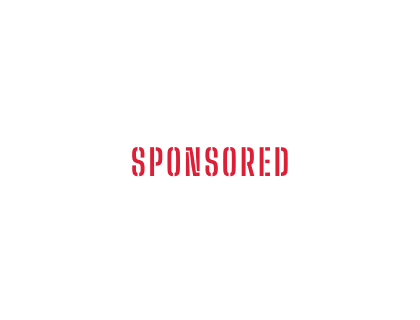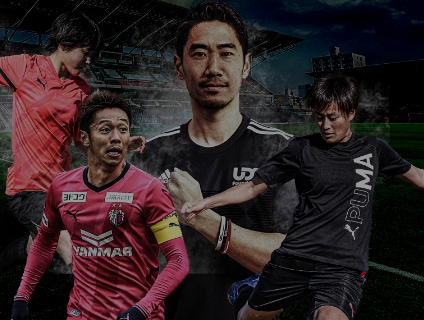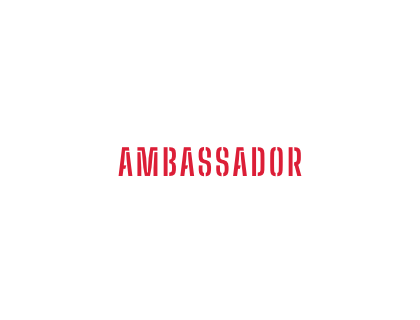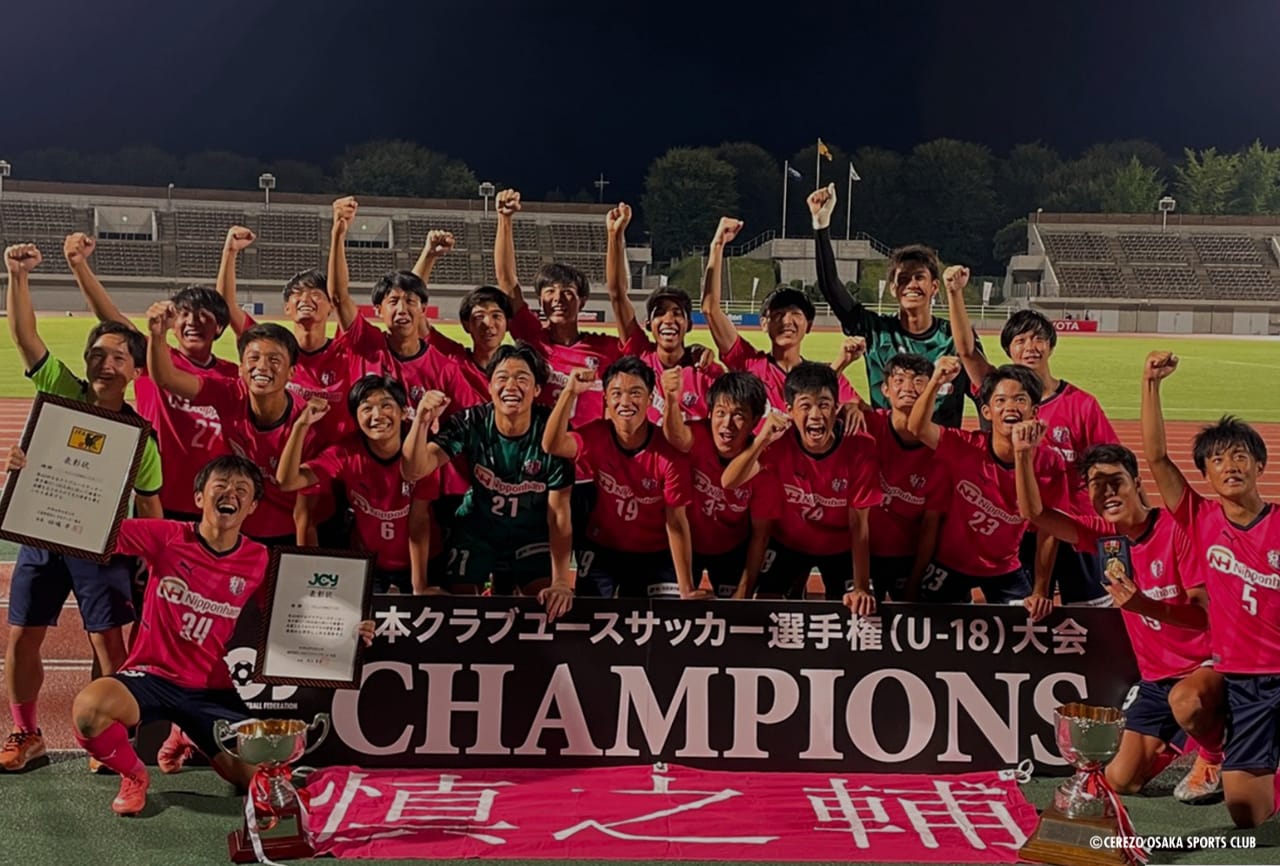
Yoshiaki Maruyama's

Pursuing Technique to Develop One-of-a-kind Players
Cerezo Osaka Academy Director Maruyama Promotes New Initiatives with Technical Committee Chairman Yahiro Kazama
First improve the level of coaches, then create a player development mechanism
On August 3, 2022, the Cerezo Osaka U-18 team won the Japan Club Youth (U-18) Football Championship. It was their third win, and their first since 13 years ago in 2009. Furthermore, on August 9, in the Japan Club Youth (U-18) Women's Football Tournament, the Cerezo Osaka Sakai Girls defeated JFA Academy Fukushima to win the championship for the first time. These wins placed both the boys’ and girls’ teams at Cerezo Osaka Academy at the top of club youth this summer.
To aid in its mission of “developing world-class players,” Cerezo Osaka announced in December 2020 the inauguration of Yahiro Kazama as chairman of the academy’s Technical Committee. In January 2021, the club began making a major shift toward player development activities centered on technique. Inviting Kazama, who continues to have a major impact on Japanese football as a licensed coach, to spearhead the committee was a significant decision by the club that would bring new change.
The double win by the men’s and women’s teams during such a transitional period is evidence that the academy’s direction achieved one result. I spoke to Academy Director Yoshiaki Maruyama, who was appointed to oversee the academy during a time of change.
Yoshiaki Maruyama
 Academy Director
Academy Director
Born October 12, 1974. From Machida, Tokyo. Graduated Teikyo High School and Waseda University, and joined Yokohama Marinos (now Yokohama F. Marinos) in 1997. Montedio Yamagata → Albirex Niigata → Vegalta Sendai → AC Nagano Parceiro → Chonburi F.C. → Port F.C. Retired in 2013 and took on various coaching positions at training organizations. After serving as Cerezo Osaka U-18 head coach and Cerezo Osaka U-23 coach, he became the academy director in 2021.
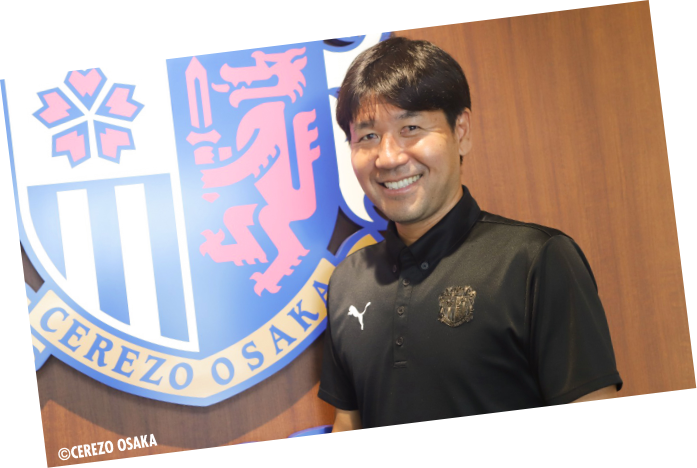
- First, what is the specific job of the academy director?
- When I was first assigned to this job, I thought, “What am I supposed to do?” I spoke with President [Hiroaki] Morishima and General Manager [Satoshi] Kajino and confirmed the direction for which Cerezo should aim. One thing I was told was that the academy would be inviting in and working with Technical Committee Chairman [Yahiro] Kazama. I had the impression that I would be the leader the entire time, so I was a bit worried, but when I thought about the future of Cerezo, I remember being excited that this might be a major turning point.
- The academy’s mission is to develop players who embody its philosophy of “SAKURA SPECTACLE,” and the club aims to “give dreams, hopes, and inspiration” and “provide exciting entertainment to everyone who comes to watch.”
- So I thought, “How can we develop players who bring excitement to all of our fans and supporters?” I decided that it was first necessary to thoroughly train coaches, align their mindsets, and bring them to a higher level. While doing this, we would create the “mechanism” for player development. I think the question is how to lead within that “mechanism.”
- We call it a “man-made jungle,” but professional football is a survival race. Of all the various countries, coaches, football styles, and approaches, we aim to develop players who will be assets to any coach, in any style or formation. I often tell the players to be Super Saiyans. We’re aiming to have 11 players who don’t hide behind anyone else, who are all Super Saiyans on the pitch. Being a team sport, there are positional roles, but, at the core, we aim for impressive players who can solve problems for themselves.
- So the question is, how do we develop such players? A major point there is the presence of Chairman Kazama. He is definitely a major underlying factor. His technical perspective has been strongly ingrained in the players, coaches, and the club. Players cannot be developed without first firmly establishing a shared definition of “technique” and changing the mindsets and perspectives of the staff.
- The academy director’s work should culminate in something like a “comprehensive production to guide the players” centered around Chairman Kazama’s approach. I’m not sure it that’s the right way to put it, but I basically play a role in everything, running between the training ground and my desk every day.
- It’s been a year since he was inaugurated. Are you seeing a new direction?
- For me, when I look at the entire academy, especially the youth matches and growth of the players, I get a real sense of the changes made my pursuing technique. On the other hand, as far as assessing progress from my standpoint as director, it’s still not enough. Because it is being adjusted, the level of demand is getting higher and higher. We look at the phenomenon in the context of defining technique, but this pursuit of technique has no limit.
- We can say that we’ll develop players the likes of which have never been seen before, the only players of their kind in the world that no other club can imitate. But we have never seen such players before, and they don’t even exist in our minds. It's up to us to decide what we want and how we want to get there.
“Looking” and “not looking” added to actions of “stopping, kicking, dribbling, receiving, and dodging”
According to Director Maruyama, Cerezo Osaka currently defines “technique” as “controlling the ball,” “controlling the body,” and “controlling the mind.” Furthermore, the actions of “looking” and “not looking” were added to the currently widely used actions of stopping, kicking, dribbling, receiving, and dodging in day-to-day training.

- Is there any difficulty in actually establishing a concrete definition for “technique”?
- The word is often used in an oversimplified way, but it can be taken it in many different ways, and every day I feel the difficulty and importance of aligning our perspectives. I am always asking myself how to interpret and organize it.
- For example, martial arts has “kata.” In order to practice those “kata,” you have to flatten yourself. However, people have habits, certain ways of thinking and using their bodies, and their own individual strengths and leanings. Coaching in the presence of such things is different from coaching in a flat situation, in terms of how players come in and how they grow. For that reason, what we are trying to do first [to instill basic “kata”] is to create a flat situation.
- This means a situation in which players can freely manipulate the ball. In order to control the ball, players must be able to control their own bodies freely. They must also be able to control their own mind, which is the control center of the body. That’s what we consider “technique.” The more you get into it, the deeper it goes. It’s hard to describe. How far can focusing on technique take us? We’re taking on that challenge every day.
- I recently interviewed Sota Kitano, and when I asked him what the best part of Cerezo Academy was, he said, “There are no limits set, including for coaches.”
- Chairman Kazama also often says this as well, but what we value most is “not blaming other people or things” and “having expectations of yourself.” That’s everything. How much you expect of yourself. Whether you can point the arrow toward yourself.
- This was true when I was a player as well, but I think players make a lot of excuses. We blamed the coach, the pitch, our peers, or our position. However, when you actually go pro, no matter what position you are or who the coach, is if I can’t achieve the task given to you, you won’t be able to win the trust of the coach or those around you. In world of professional football, you will just be replaced with another player. It’s a matter of whether you’re a player who just does what you want, or whether you’re a Super Saiyan.
- What does the academy value most?
- Our current efforts come with major challenges, so I think bringing problems to attention is what’s valued most. So far, in Japanese football, I think that the J. League has risen up and incorporated a mix of global trends and different ways of doing things, trying to create our own original. We are trying to disrupt those trends–-trying to pursue technique as we have defined it. Rather than something defined by someone else, we have created our own gauge.
- I don’t know if it will take 10 or 20 years to see if this is a success or not. But we are making a serious effort as a club. So, I think it’s extremely important to the world of Japanese football, and we have to succeed.
- Personally, I think that Japanese people are very suited to “pursuing technique.” We have the phrase “mastering your craft.” It’s difficult, but I think as Japanese we can do it. To put it another way, I think that such players are highly likely to “emerge.”
- Japanese players known for their speed and power will take on Europe, to see how fast and strong they truly are when playing the Premier League or, say, the Champions League. The pursuit of technique reverses everything. When we try to develop players who could overtake even all of the able-bodied international players, how do we counter that strong, unyielding power and speed? It’s by mastering technique. It’s their “craft.”
- If we describe what we are trying to do as “stopping the ball,” first we have to “keep it still.” “Still” the ball in one move, to a position where you can personally maneuver it in any way. This stops [braces] your opponent. We intentionally create that situation. If your opponent moves, feint; if they don’t, aim to score. “Stopping the ball” means “intentionally manipulating your opponent” and thus “creating options.”
- Moreover, think about the reason for “stopping, kicking, dribbling, dodging, looking, and not looking.” Those things are not the objective in themselves. The objective of football is to score a goal. We use technique to try and score goals in the shortest and fastest way and in the least amount of time. So things will get confusing if we make stopping and kicking the objectives. Everyone struggles with this, even the staff, to be honest.
- Making those things the objective is putting the cart before the horse.
- In football, we look at it from that perspective and adjust our mindsets in that way in order to win games and score goals. How can we use that technique to score goals in the shortest and fastest way?
- We define “dribbling” not as the concept of carrying the ball, but “getting the ball to its destination in the shortest possible time” or “making the ball ready to be played at any time.” The next play can be implemented in the next step. To put it in easier terms, it’s like when Messi has the ball. He is always ready to dodge an opponent’s foot, and he can pass or feint the moment an opponent approaches. That’s what we define as “dribbling.”
- Furthermore, “dodging” is achieved when the passer and receiver are on the same page in terms of “when” and “now.” They are aligned, so there is no need for space. Once the other player has moved, it’s too late. If the passer and the receiver aren’t on the same page as far as the projected image of “this is what happens when this happens,” the play will not come to fruition. Those skills are improved slowly but surely with everyday training. To this end, the coaches have to have readjusted their own mindsets or they won’t be able to convey it to the players.
- It’s hard for the coaches and players to readjust their mindsets.
- When thinking about the speed of players’ growth, it might be fastest to have Chairman Kazama make his way through each category and coach all of the players directly, but that’s not realistic (laughs). So we have to create a “mechanism” as a club. So it’s ultimately about the coaches. If they coach thoroughly with that perspective and are able to convey that well, the players will grow.
- From the standpoint of academy director, I want to speed up the players’ growth. If I were a player myself, I would think, “Wow, so much can change in a year,” but as director, I see that we still have a long way to go.
To develop one-of-a-kind, outstanding players the likes of which have never been seen before
Director Maruyama himself started his professional career with the (former) Yokohama Marinos. He played as center-back for Albirex Niigata and Vegalta Sendai, and also experienced Chonburi F.C. and Port F.C. on the Thai League at the end of his career.
He was inaugurated as J. League Asia Ambassador in 2012, right when the J. League Asia Strategy began. He says that he assisted people on the level of J. League club presidents and training team managers when they came to visit Southeast Asia.
This experience in Southeast Asia led him to his current position.

- Let me ask about the academy’s activities in Southeast Asia. Cerezo Osaka formed a partnership with Thai club BG Pathum United F.C., formerly known as Bangkok glass F.C., to do work at Yamaoka Hanasaka Academy. What specific activities do you do?
- Largely, in Cerezo Osaka’s search for partner clubs in line with Yanmar global strategy and Southeast Asia strategy, the former Bangkok Glass was the first one we matched with. I was on site from that first year as the Bangkok Glass junior youth coach.
- Yamaoka Hanasaka Academy was founded in 2016 as a joint effort by Pathum United and Cerezo. It contributes to the development of young Thai players. We hold tryouts on site and have built dormitories, where the players live as they work hard at football and studying. Initially, we were sending resident staff from Cerezo to train Thai coaches, but that has stopped for the moment due to the pandemic.
- I think we will implement this in a new form going forward. I actually just got back from a visit to Thailand for that purpose. Our partner Pathum United has become a big club, having won the Thai League last year, and currently winning in the ACL as well, so there have been some slight changes in what we are seeking in each other. We are staying in step with one another and discussing the situation.
- Each of Cerezo’s categories regularly go there on tour since partnering with them when they were Bangkok Glass. Bangkok Glass takes care of Cerezo when we go to Thailand, and we take care of them when they come to Japan. It’s hard to arrange training grounds, hotels, and buses without help, so having a strategic alliance with another club is an advantage. The Thai camp was on hiatus due to the pandemic, but the top team may resume it next year.
- Thank you for your time. Lastly, I have some questions about yourself. What is your driving force?
- It’s all about being excited by what we’re trying to do right now. We’re trying to take on the global stage with our own originality. Identifying problems in Japanese football. I think that taking on the challenge as a model will create various ripple effects.
- To that end, it has to first be presented as a “product.” If we don’t speed up, it won’t spread internally and externally. For example, even if I say, “Trap all 11 members of the other team inside our penalty area and destroy their defense,” the reaction would be, “What are you talking about? How are we supposed to do that?” You have to actually show it. In that light, “developing unprecedented, one-of-a-kind players” is my driving force.
- What kinds of challenges do you want to take on going forward?
- I’ve repeatedly talked about developing players the likes of which have never been seen before, but ultimately, that’s up to them. It’s a difficult but worthwhile challenge. When you step out into the world, there’s a survival race that you have to survive by following the global trend. It’s the jungle that I mentioned at the beginning. The world has rules, and it tries to bind us with those rules. We have to teach those to our players. However, on the other hand, we want to–-no, we are trying to–-develop extraordinary players who go beyond rules, and beyond ideas. It’s a matter of what we can provide to them and what kind of environment we can offer them to develop them into players that go beyond our concepts. I've been struggling with this for a long time now, with great interest.
- I’m excited to see what kinds of players emerge.
- I don’t think the world can wait very long. So as the academy director, it’s essential to demonstrate a certain level of results as quickly as possible, within the club and beyond.
- You have to demonstrate actual results and not just the philosophy.
- The philosophy is the most important part of the foundation. We want to develop players who are committed to and follow through with that philosophy. We want to share that with the world. But there are difficulties. There are wins and losses. If we lose, many things are said to the staff and players. For me, it’s a matter of whether the club as a whole can withstand that. The ultimate victory for the academy is how many good players we can send to top teams and how many world-class players we can produce. I think the club’s history and culture will be nurtured when our supporters and our Cerezo family are able to tell each other, “We can lose in order to win for real.”
- What we do is up to our mentalities, and it’s endless. I often talk with Chairman Kazama about this. I ask him what our role is, and he says, “Well, maybe we don't have to do anything in particular, but if we want to, the possibilities are endless” (laughs). After all, I love football, and I want to see our players go out into the world. I can’t suppress that feeling. The Cerezo of today is an environment where that can happen. It’s a matter of how many years it takes to achieve that. That’s the biggest challenge for me.

Cerezo Osaka, the power of the academy
 for the future
for the future
Cerezo Osaka Academy aims to develop world-class player. From Cerezo Osaka to the world.
"We want many beautiful flowers to bloom in the future."
We approach the driving force for such a future.
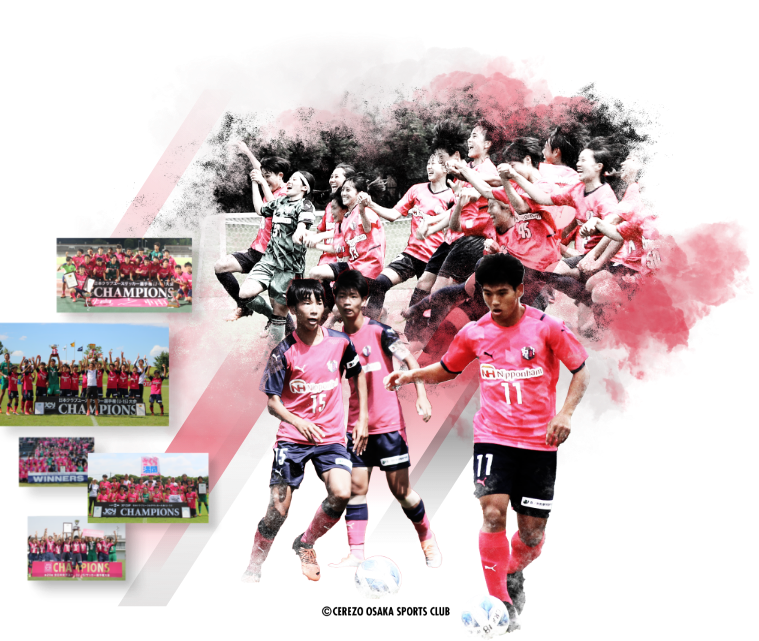

Athlete's

Why do top athletes keep challenging?
We approach the driving force of top athletes who continue to challenge.
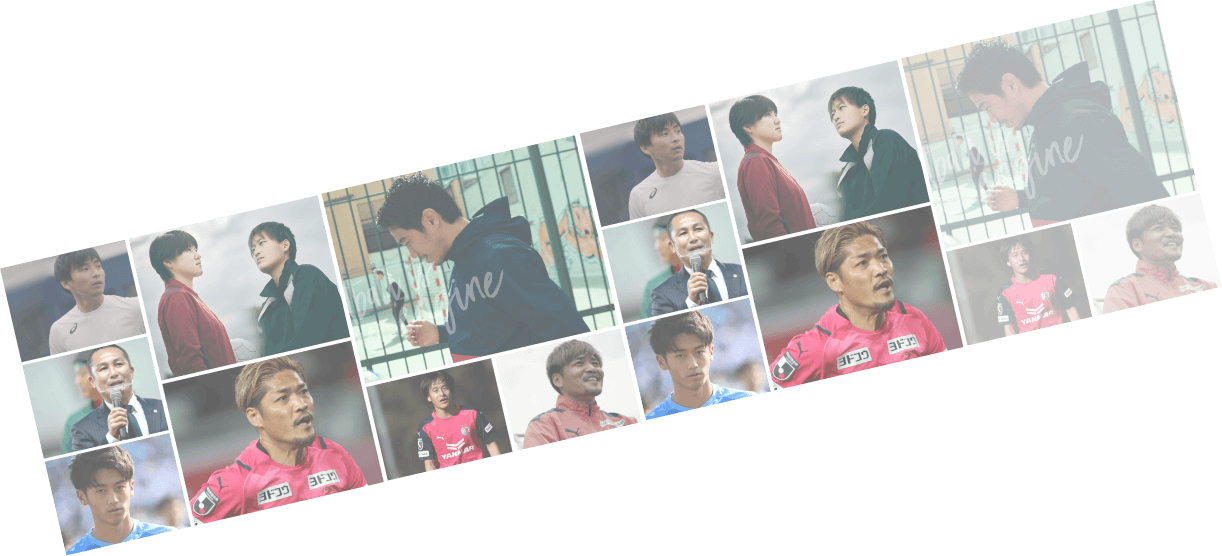

 Agriculture
Agriculture
 Tractor
Tractor
 Solis Tractor
Solis Tractor
 Combine harvester
Combine harvester
 Rice transplanter
Rice transplanter
 Tiller
Tiller
 Agricultural Utility Equipment
Agricultural Utility Equipment
 Recreational Marine
Recreational Marine
 Marine Commercial
Marine Commercial
 Compact Equipment
Compact Equipment
 Excavator
Excavator
 Industrial Engine
Industrial Engine
 Compact Power Products
Compact Power Products
 Energy Systems
Energy Systems
 Power Generation
Power Generation




